The Tudor Black Bay collection has become the standard bearer of dive watches in the $3 to 5k price range over its 12 year and counting production run. The watch has had no small impact on the genre as a whole, and while not single handedly responsible for the push toward vintage inspired designs, it was certainly the tipping point. But a lot has changed since 2012, from consumer expectations to style and size trends, and the Black Bay collection has evolved to incorporate a broad range of references as a result. But there’s one subtle line the collection has never really crossed, until this year that is, with a new Black Bay 41 that looks to the future, rather than to the past.
Last year, the Tudor Black Bay 41 received its first real update since welcoming a manufacturing Kenissi movement in 2016. The long awaited move brought some minor but important case and dial revisions, as well as a METAS master chronometer certification for the MT5602 movement. A new five link bracelet made an appearance here as well. The changes added up to an appreciably better experience all around for the classic Black Bay, though they were presented in a single colorway as a nod to the original Black Bay released in 2012, with a black gilt dial and a burgundy bezel. This year, Tudor adds a second colorway to the mix with a black dial, black bezel, and, most importantly, clean white printing and lume, ditching the gilt altogether.
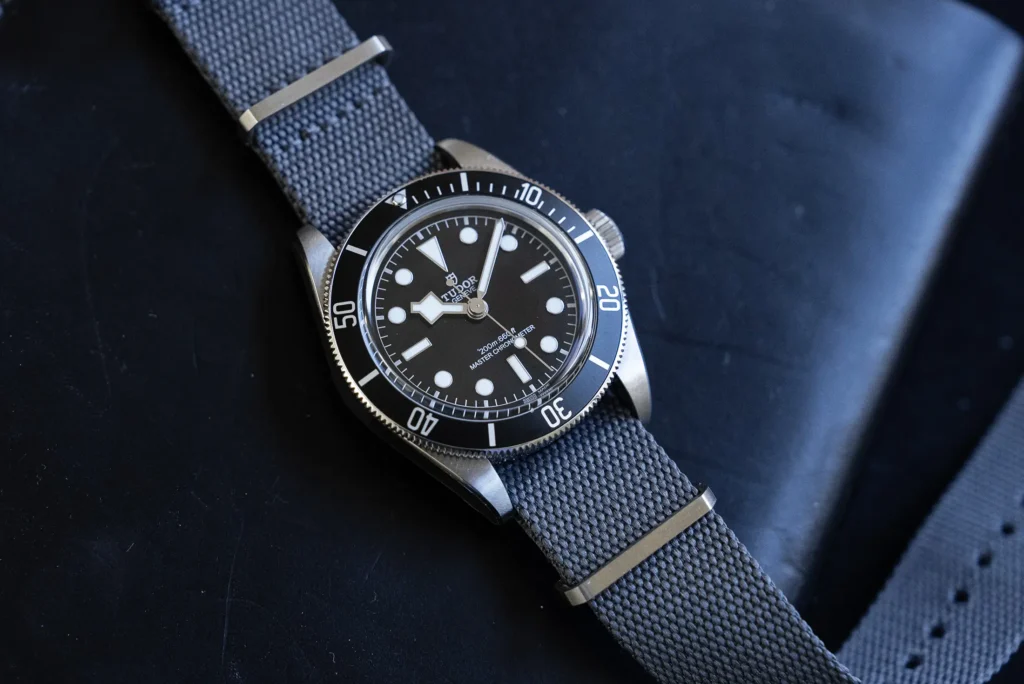
This watch represents an entirely new configuration for the Black Bay 41, placing it as close as it’s ever been to a modern Tudor Submariner. To be clear, there have been plenty of Black Bay references sans gilt dials, even in the Black Bay 41 range, however this is the first to deliver it in a pure black, white, and steel package. We are a bit spoiled these days when it comes to classic black and white dive watches, but this particular Black Bay feels significant in a different way. In some ways, it feels like a turning point for the collection.
The decade-plus long trend of recreating the look of an aged dial in a new watch has yielded some greatest watches to be sure, but the sentiment around the practice has shifted tone in recent months, hitting a fever pitch around one of Tudor’s other new releases, a Black Bay 58 GMT. That’s a watch that many of us have been asking for, and Tudor delivered in a big way. They developed a new movement that would allow for the case dimensions demanded by enthusiasts, opening the doors for an exciting new chapter in the complicated Black Bay range. However, this year more than ever I heard discontented reactions about the colorway chosen for that watch. The use of gold in the dial and bezel felt more controversial than usual this time around, and to me signals a significant shift in attitude toward the practice.
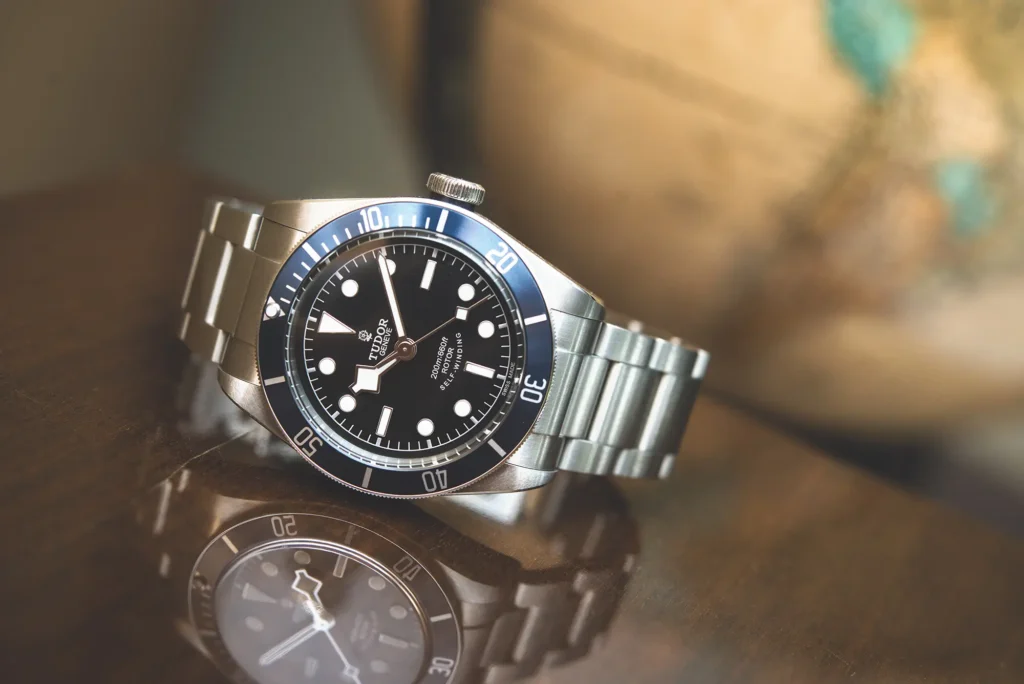
Dissatisfaction with the colorway was far from unanimous. A significant portion of enthusiasts welcomed this execution, but what was once a small cohort that wished for more neutral/modern dial treatments has clearly grown into a prevailing voice. The Black Bay 58 GMT has been a lightning rod for this discussion, and it’s something that I’ve discussed at length both here in these pages and on The Deep Track podcast. My general take has been that this trend would run its course save for special or limited editions, and that brands would return more neutral base designs that could be interpreted and expressed across a range of executions. This is something that Zenith has excelled at in recent years, as they honor their historic designs as the designers intended them, and not for the way age treated them.
Until this year, the only way to get a Black Bay without the gilt treatment was to look toward complicated references such as the chronograph and the GMT (including the Pro, but that’s a different story); the precious metal (or ceramic) cases such as the 925; or to go with a blue bezel. There was no black dial/black bezel with white markings and lume in their most popular time-only references. It’s a big collection, but this felt like an odd omission. Surely a deliberate choice by Tudor, perhaps an effort to keep some distance between the Black Bay and the Rolex Submariner, as well as their own more modern dive watch collection, the Pelagos.
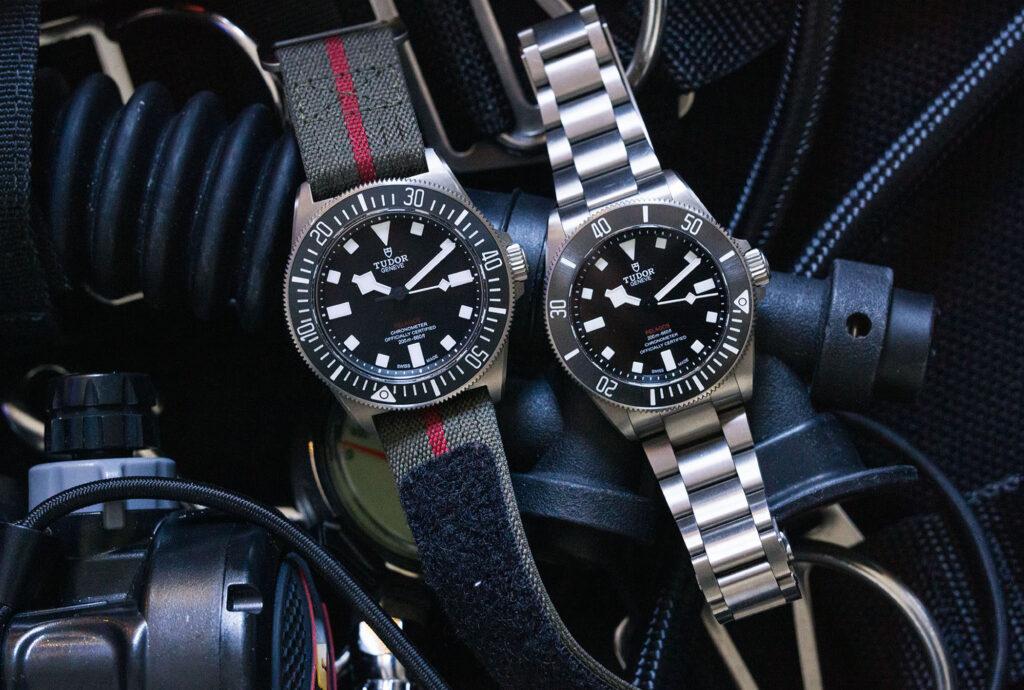
This newest Black Bay 41 ‘monochrome’ changes that paradigm. This is the most modern interpretation of what it is an amalgamation of historic designs from Tudor’s history, and an acknowledgement of where the Black Bay collection must go in order to ensure its future. It should come as no surprise that the design works perfectly well rendered in such stark contrast, and there is a formality to this watch that is not found elsewhere in the Black Bay collection that sets it further apart from the Pelagos collection, and even the Rolex Submariner, to which immediate comparisons were drawn upon release.
The Black Bay 41 ‘Monochrome’
I’ve been wearing the newest member of the Black Bay family for the past week, alongside a few other black/white divers from Tudor and Rolex to get a sense of how this watch will appeal to a person like me, with a penchant for modern dive watches. I have owned a first generation Black Bay with blue bezel and ETA movement, with the rose on the dial and smiley face text at the bottom. That was the first Black Bay to grab my attention when it was first released in 2014, and it was also the watch that ushered the Tudor brand back to the US. As much as I loved the design of that watch, I found the case a bit more difficult on the wrist.
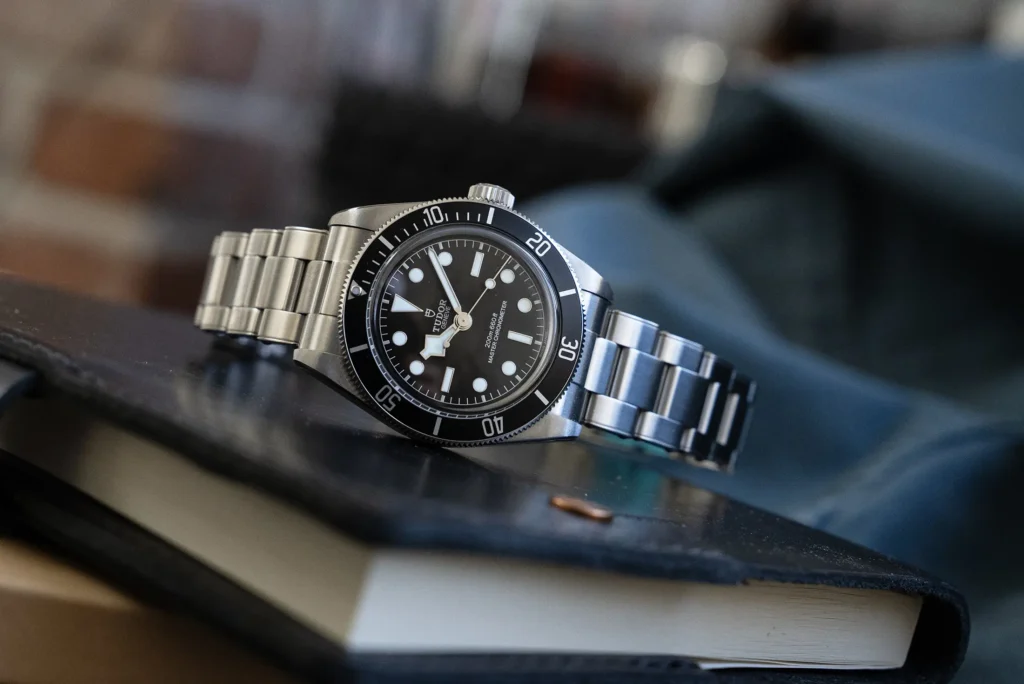
Those early Black Bay 41 watches had a 22mm lug width, and measured 14.4mm thick, a number that always confounded me as this was a time-only three hander with a depth rating that I wouldn’t consider to be extreme at 200m. It was a watch that fell just outside of my comfort zone. But not by much.
Truth be told, the Black Bay 41 isn’t a watch that I’ve dedicated much thought to in recent years, as Tudor has fleshed out other areas of the family in ways that I’ve found more interesting. The OG was something of an aside to all that. That changed last year with the introduction of a new, slightly revised 41 with a burgundy bezel. The changes were small, but the impact was large, nudging the watch just inside of my, and I surmise many others’, comfort zone. My only sticking point with that particular execution was the gilt dial. It looks nice against the burgundy bezel, but not quite in my wheelhouse.
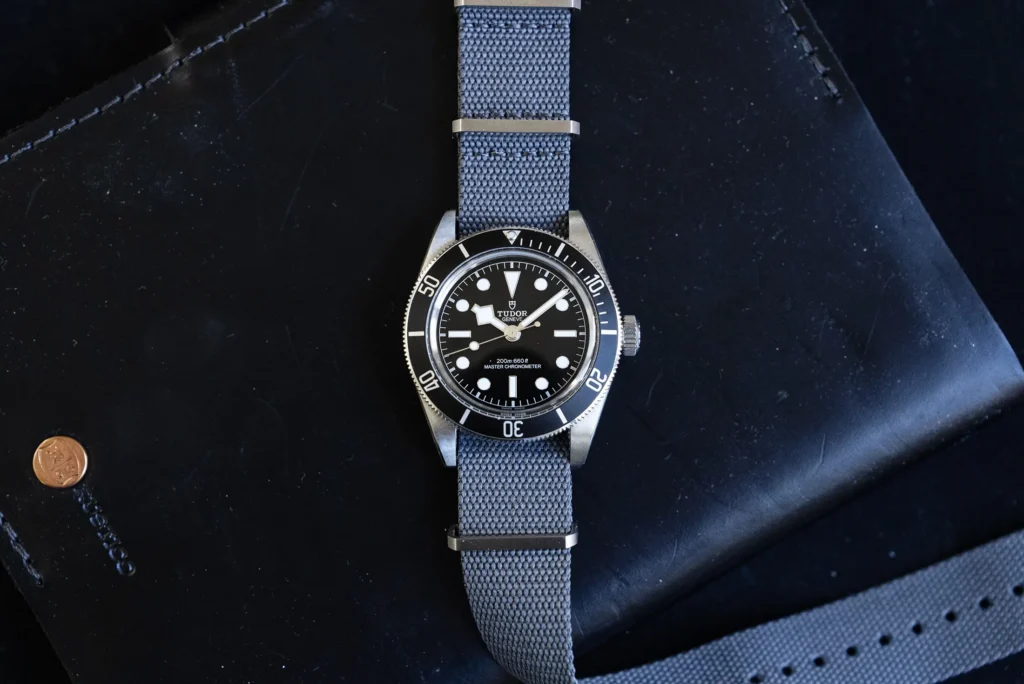
There is a strange contrast between the enthusiast world’s inability to accurately predict what Tudor might do next, and Tudor’s ability to give us what we want. The newest Black Bay 41 is just such an example, feeling at once an obvious next step, while also managing to be a surprise for many of us. It’s fun to speculate on the boundaries put in place between Rolex and Tudor, or what kinds of restrictions might exist for Tudor due to their positioning in the family, though in reality I suspect things are far less dramatic. The existence of a white on black Black Bay 41 could be seen as crossing some imaginary line that separates the Black Bay from Submariner, but in practice these are two very different watches.
But first, let’s look at the changes made in this new generation of the Black Bay 41. This is a watch that deserves to be judged on its own merit, and not through the lens of what came before it. This new case measures 40mm exactly at the case, and about 40.5mm at the edge of the bezel. It is now 13.5mm in thickness, and 49.1mm from lug to lug. The distance between the lugs is now 21mm, which allows for a more natural flow between the width of the case, to the lug, and onto the 5mm of taper in the bracelet. The case itself still stands tall with the characteristic vertical wall along the case side, though a polished chamfer runs the edge of the lug in a welcome bit of transition where there otherwise would be none.

The domed sapphire accounts for a bit of that thickness, but the rest is still very much visible when viewed from the side. This is especially evident when viewed next to a Submariner (ref. 114060), which measures about 12.5mm in thickness with a flat crystal, but the case wall is noticeably trimmer, tucking more of its thickness into the belly of the caseback. I also find that this execution helps the watch nestle into the wrist (my wrist, at least) a bit more snug than the flatter bottom of the Black Bay.
Most importantly, the new Black Bay case is perfectly wearable, even if it sits a little higher on the wrist than something like a Sub, for the reasons pointed out above. It does feel more top heavy, but there’s nothing major to argue about here. In fact, the biggest sticking point may be the long lug creating some overhang on some wrists, but overall this is a very pleasant watch on the wrist, while bringing a little more heft to the table than something like a Black Bay 58.
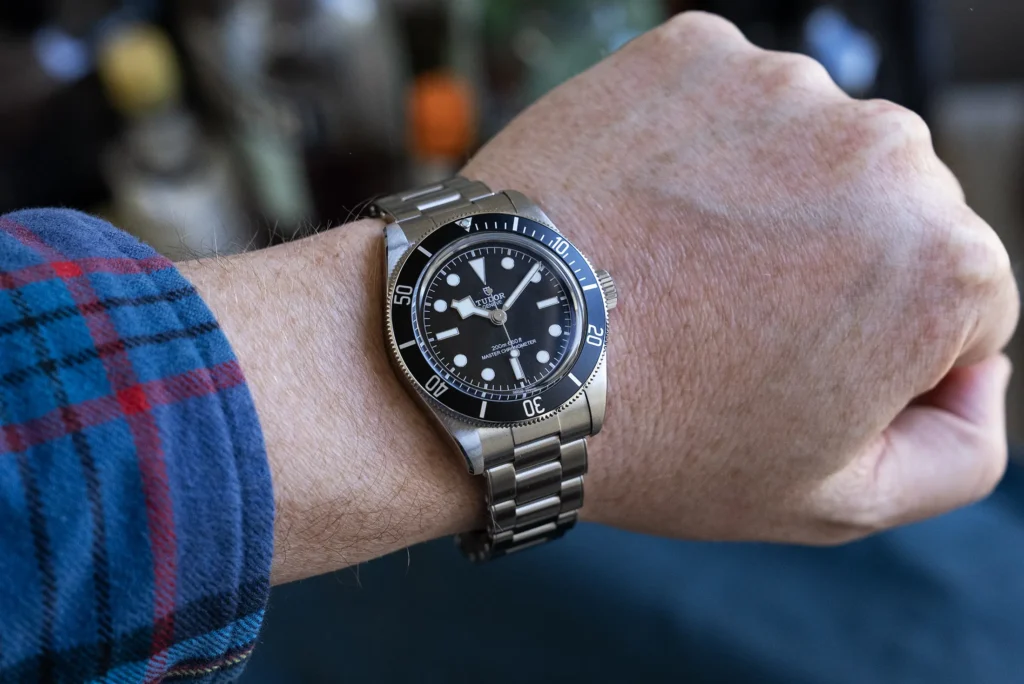
One niggle I’ve always had with the Black Bay is the edge of the bezel assembly, which is much thinner and tighter than what you find on the Pelagos or Submariner. It’s quite difficult to grab and manipulate, and while it looks less aggressive than those other watches, it’s still a functional part of the watch, so it should be just as easy to use.
Tudor is continuing to use the rivet style three-link bracelet on these watches, though the new 5 link is also on offer here (which I would likely recommend over this three-link). The feel of the bracelet is where you’ll notice an immediate difference between something like a Submariner, and is the biggest in-hand tell that there is a considerable price difference between the two. The end link of the Black Bay is female, with a small connector link integrating to the rest of the bracelet. This creates a creator angle of articulation, but can feel a little loosey goosey in practice. The T-Fit clasp does make an appearance here, which is very similar to the Glidelock system in clasp of the Sub. The biggest difference is the firmness with which that adjustment is made, being a bit softer on the Tudor.

The dial also welcomes a few minor changes in this generation, most notably with the use of a lollipop seconds hand, accenting the hour markers and providing a nice nod to older references. The snowflake hour hand persists, and the rest of the arrangement is classic Black Bay all around. What is different is the text on the dial at 6 o’clock, denoting the watch’s status as a master chronometer. Tudor is using the manufacture caliber MT5602-U, which has been independently certified as a master chronometer by METAS, the same body that Omega uses for their certification. This means that the movement will operate within a 5-second range of variation each day (0/+5).
The dial is about as classic as you can get. There are only 2 lines of text at the bottom, as the words Black Bay are left off (unlike the Pelagos, and even Submariner), and the chapter ring is pulled entirely into the dial. It all feels old-school in a timeless way, and seeing it rendered in pure white over black is borderline jarring. I’d go so far as to say that this execution offers a chance to fully appreciate these design choices without being placed in the context of the past by a gilt treatment. It’s an admission that this watch is more than just a throwback, it’s a modern preservation.
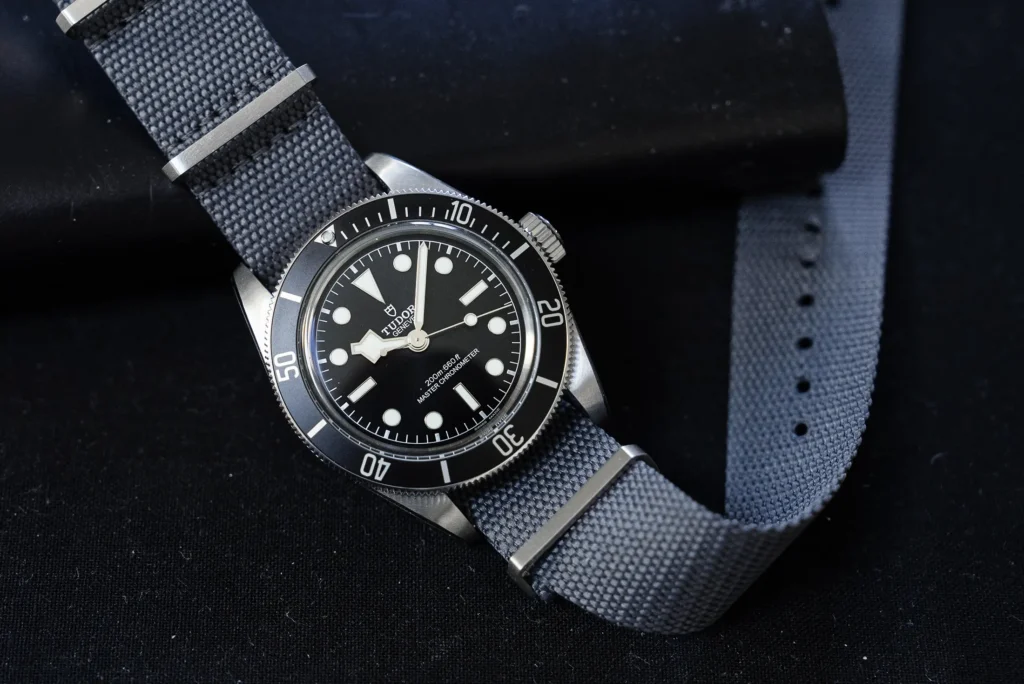
Everything here amounts to rather small changes, though they combine to have a big impact not only on the practical day to day nature of the watch, but also on the perception of the Black Bay collection. This watch represents a widening of the path at a base level. Generally speaking, Tudor (and Rolex) follow a set of rules to keep their collections cohesive and distinct from one another. Titanium, for instance, is reserved for the Pelagos collection, as are the square hour markers. The Pelagos is their modern dive watch, and there are no throwback details being bandied about, these are as straightforward as they can possibly be. The Pelagos 39, with a smaller form factor and subtle finishes, is a slight deviation from that, and widens our understanding of what that collection is.
Similarly, the new Black Bay 41 monochrome represents a slight deviation from what we understood the collection to be. It pushes that boundary a bit further in expressing the classic no-date dive watch in such a modern manner. There is still a clear contrast between the Black Bay and the Pelagos, but each has developed their own variety of references that further define the collections as a whole. Some of those watches end up being transitional in nature, but we won’t really recognize that until after the fact.
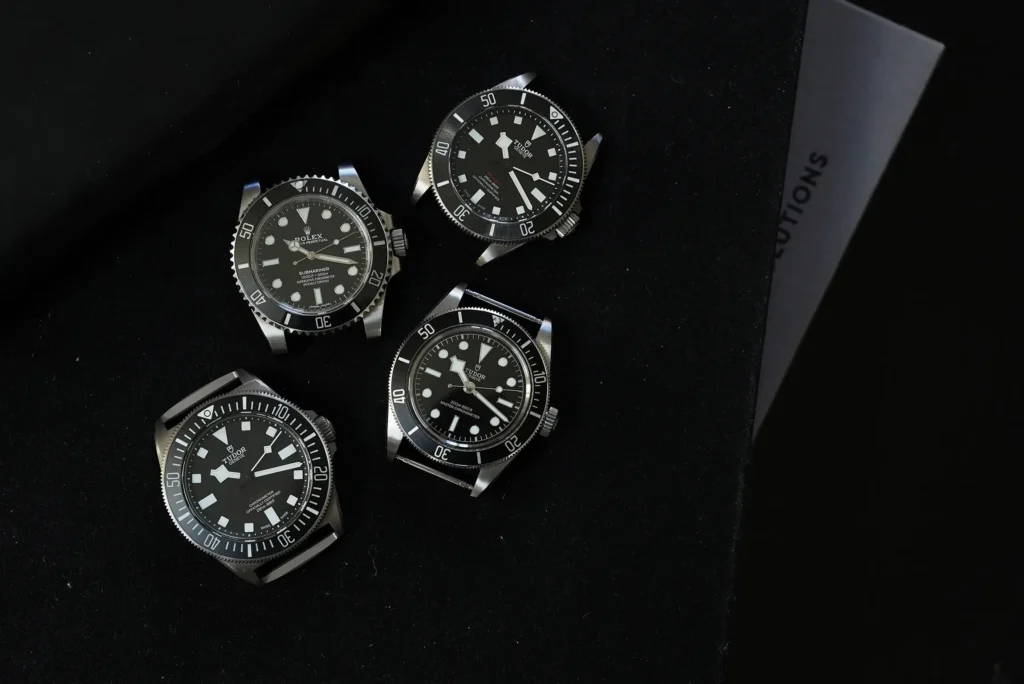
Will this Black Bay 41 monochrome be such a reference? Perhaps, but even if it ends up opening up more sans gilt executions for watches like the Black Bay 58 GMT, Black Bay 54, and Black Bay 58, then I’d call it a win. Looking further ahead, and if I may speculate, if and when we see the return of a heritage chronograph or even big block chronograph type of design, I now have more faith that it will be done with a balanced approach rather than simply recreating an aged original. To be fair, the original Heritage Chronograph references had a perfect balance, and were it not for the overly bulky nature of the cases they would have been perfect.
All I do know is that the Black Bay 41 in current form, either in monochrome trim or with the burgundy/gilt set up, has very consciously and methodically matured from where it entered life over a decade ago. This is a more approachable watch than it has ever been, and now represents a more viable stablemate to the Black Bay 58 and Black Bay 54 collections. On paper, this offers nearly all the same selling points as the Submariner: 40(ish)mm case, in-house master chronometer movement (superlative for the Sub, but same concept), dive capable with a 200m depth rating (300m for the Sub), and taps directly into a timeless design language that helped to establish the genre as we know it today. The Tudor is priced at $4,425 on this three link bracelet, which is just under half the price of the $9,100 Submariner reference 124060. In hand, the differences are more apparent, but I’m not sure they will account for the gulf in price, the brand at the top of the dial notwithstanding.

The new Tudor Black Bay 41 is a very, very good watch. It’s more formal than any of the other watches I’ve compared it to here, and just about every bit as capable. What it lacks in at-a-glance-excitement, it makes up for in subtle versatility, pairing as well with a suit as it does with a t-shirt and jeans. If you have a collection of dive watches that includes plenty of the classics, you’ll find nothing new here. On the other hand, if you’re looking for a single dive watch in your collection that will cover all your bases, I cannot imagine a better candidate under $5,000 than this Black Bay 41. Tudor

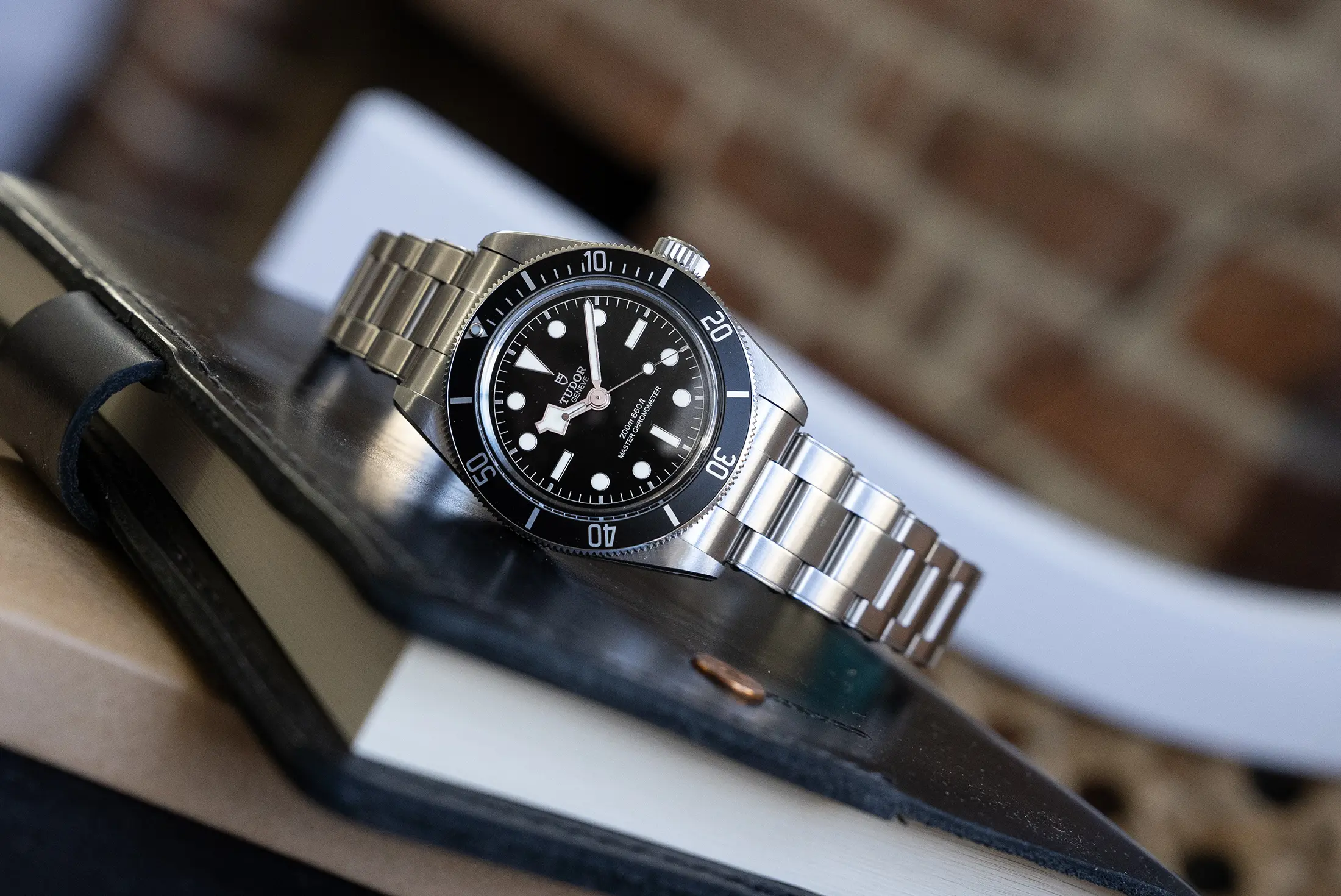
Comments
One response to “Video Review: Tudor Black Bay 41 ‘Monochrome’ Charts a New Path”
Great review. Very thorough, and I loved the comparisons to the Submariner and Pelagos that illustrate where this new Black Bay sits among the Rolex and Tudor family of dive watches. Great photography, too.